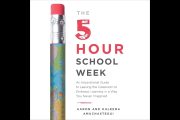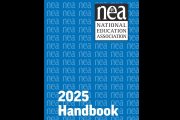The Obama administration is seducing states with $500 million grants to get them to enroll kids into accredited, pre-kindergarten programs. The Early Learning Challenge (ELC) is yet another bribe under Obama’s “Race to the Top,” the $4.35 billion incarnation of an endless stream of education “reform” projects implemented since President Dwight D. Eisenhower catapulted education to national prominence in 1957 following Russia’s launch of Sputnik.
ELC is run jointly by the U.S. Departments of Education (DoE) and Health and Human Services (HHS). All grants will have been awarded by year’s end. While at least two states have already received windfalls for signing on ($700 million for New York and Florida), some 14 states’ education agencies are still dithering. They know only too well that carrots come with strings, many of them turning out to be unfunded mandates. State Departments of Education are virtual clones of the federal parent, typically referred to as a State Education Agency (SEA); they receive pass-through money from the U.S. DoE plus revenues from state taxes. Every time an SEA takes federal bait, it loses more of its autonomy through federal oversight, although at this point it’s hard to imagine how much more state and local agencies have to lose. ELC follows a textbook oversight scenario, typical of federal agencies providing grant monies to states:
The federal department grades each state’s application according to a scale. Winners then use the grant money to implement their “own” proposed reforms — which must reflect the current administration’s political agenda — and federal officials judge how well each grantee is “complying,” often by sending their department’s own inspection agents to the site. This is how the U.S. Department of Justice, for example, conducts its grant inspections for everything from the Community-Oriented Policing Services (COPS) program to the Office of Juvenile Justice and Delinquency Prevention’s anti-gang initiative grants. In the case of ELC, the Education Department’s Implementation and Support Unit’s agents complete on-site program reviews of each state receiving monies.
For concerned citizens seeking a sea change in American politics overall, it is important to recognize that modern schools are the single most influential factor in a child’s development — even before parents. This is mainly due to the fact that government encourages, bribes, and even intimidates parents into handing over their youngsters to be institutionalized (e.g., early childhood programs) as soon as possible, preferably prior to the age of reason, which generally is determined by child experts and theologians alike as being around the age of 7 years. The rationale behind ever-earlier childhood programs is that most parents are ill-equipped to do the job — i.e., lacking in the required skills, psychology credits, time, and resources.
However, once a parent enters the child into the system — be it a public or private entity (exception: non-accredited neighborhood co-ops) — government oversight kicks in, monitoring the child and evaluating parents to a greater or lesser extent. If you don’t believe it, try keeping your child home from school for a week without some exceptionally good reason and see what happens.
The first thing any pre-school program does is to address the child’s socialization skills — i.e., how he relates to others, whether he makes friends, how well he cooperates. Now, for parents who are below the age of 55 — so-called “Gen-X-ers” and “Gen-Y-ers” (or “Millennials”) — which means a majority of parents at this juncture — this may seem normal. But it is, in fact, a huge departure from earlier eras.
Prior to the 1970s (and especially pre-1955), parents were considered the child’s first and most important influence, whether they actually schooled their offspring or not. They wielded authority and served as role models (as per 1950s sitcoms Ozzie and Harriet and Father Knows Best). Thus did youngsters learn the dynamics of group interaction through the relatively small setting of the family. They learned what behaviors worked and which didn’t. Discipline typically was doled out with a mixture of tough love and tenacity. Talking back, tantrums, disobedience, surliness, unresponsiveness, refusal to share workloads and belongings, not “catching on” to day-to-day routines, and frequent run-ins with neighborhood children — all these were noticed by parents and set off the appropriate alarm bells without any help from “experts.” Mothers, in particular, worked hard with youngsters who displayed any of these tendencies so that, by the time such youngsters attended school, around age 6 or 7, the lion’s share of such conduct had been brought under control, even if a child still remained, in most teachers’ judgment, “a handful.” Every child was seen as an individual, each displaying certain characteristics, but “packaged” differently.
The job of the teacher, always in collaboration with the parent, was to smooth out the rough edges that every child naturally possesses, so that by Graduation Day at age 17 or 18, the pupil would be capable of making life choices that incorporated the best of his or her innate talents, goals, and tastes so that any weaknesses were less apt to hold the student back.
Today all that has changed. Early education, in particular, is intentionally built around peer pressure, so that the child learns to value his peers more than he does his parents, teachers, or other adult authority figures. This attitude carries on into the teen years, college or trade school, and adulthood. Thus does the child adapt by adopting the kind of blind conformity that borders on homogenized thinking as opposed to individuality — a situation which, at least for America’s experiment in freedom, is disastrous. A nation will not get leadership, or “thinking outside the box”; it will not get innovative ideas or engage in healthy debate on issues-of-the-day as long as children are inculcated with this type of conformity — mislabeled “compliance” and “teamwork” — because what it morphs into is conformity of thought, not merely adherence to traditional norms. To modern parents, this may seem like splitting hairs. To our Founding Fathers, as noted historian Henry M. Wriston said in a 1952 commencement speech at the University of Pennsylvania, it was the difference between self-determination and blind submission, the difference between innovation that leads to a high standard of living and a nation’s stagnation.
Today, we are rapidly losing the competitive edge and innovative spirit for which our nation was once famous. A major reason is 40 years of narcissism and psychotherapy passed off as education. It permeates our culture despite the few private schools that still attempt to invoke rigorous standards.
The typical graduate today emerges from school believing that being called a liberal Democrat is high praise. Its opposite, according to a joint National Institute of Mental Health (NIMH) and National Science Foundation (NSF) study, reprinted in an American Psychological Association bulletin, is to be “dogmatic,” “authoritarian,” “paternalistic,” “inflexible,” “rigid,” and possibly mentally ill. What our naïve graduate does not know is that these unsuspected Marxist leanings will summon the siren song of egalitarianism. But should he (or she) ever deviate from the Party line, that song will descend like a hammer.
Part II will detail why the current system cannot be sustained in a free republic, beginning with early childhood programs; Part III will offer an Extreme Makeover for Educational Policy.
Article Series:
Part 2: Education Department Throws America’s Kids Under the Bus
Part 3: Obama’s “Common Core of Standards”: Final Step in Phony School Reform
Part 4: Tax Dollars Fuel Unlawful Nationalized Curriculum, Parent-Bypass
Part 5: George Washington: The Latest Casualty of Progressive Education
Part 6: Mainstreaming Progressive Education: A Scheme Hidden in Plain Sight
Part 7: An “Extreme Makeover” for U.S. Education — Can We? Should We?
_________
Beverly K. Eakman is retired from the Justice Dept. and the Bicentennial Commission on the U.S. Constitution, where she oversaw grant requirements and served as speechwriter. She began her career as a teacher in 1968. She left to become a science writer for a NASA contractor, then editor-in-chief of NASA’s newspaper in Houston. Since her stints at Justice and the Commission, she has penned six books, scores of feature articles and columns covering education policy, mental-health, data-trafficking, science, privacy and political strategy. Her e-mail, a detailed bio, speaking appearances and other links can be found on her website: BeverlyEakman.com/.




